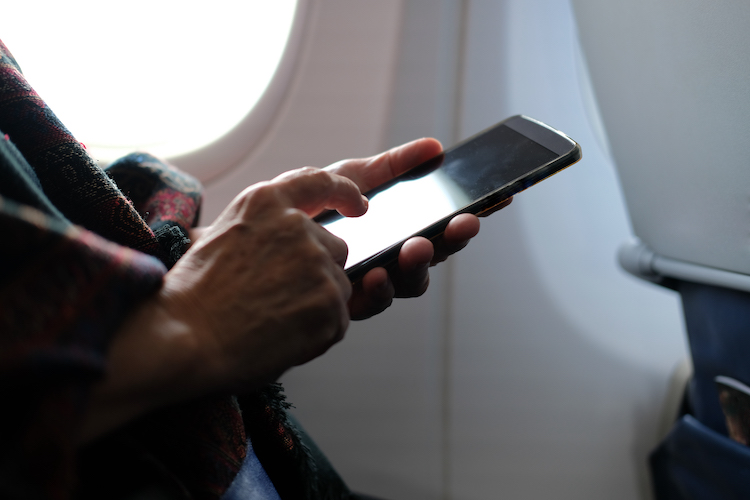Q&A with Juraj Siska of IdeaNova: Non-binary IFE
This is a special feature from PAX Tech's AIX Hamburg June 2022 issue, on page 24.

Juraj Siska, CEO, IdeaNova
Many airlines are retrofitting aircraft with seatback screens, but use of personal electronic devices (PEDs) inflight are also on the rise. Each option brings its pros and cons, which begs the question, how should airlines choose?
In this Industry Q&A, PAX Tech asks Juraj Siska, Chief Executive Officer (CEO) at IdeaNova Technologies, about the benefits of PEDs versus seatback screens.
PAX Tech: Before we jump right in, is one option better than the other when it comes to PEDs and seatback screens?
Siska: Well, a hybrid version that has the ability to deliver content to built-in seatback displays and PEDs offers the most opportunity to satisfy the most passengers. But, if the hybrid combination of seatback and personal devices is not an option for inflight entertainment, airlines should consider an array of variables before committing to one type of entertainment: cost, maintenance, updates, convenience and more.
PAX Tech: Cost is top of mind for most airlines right now. Is there a more cost-efficient option between the two?
Siska: Equipping aircraft with seatback displays is not an inexpensive proposition. The cost of retrofitting the aircraft, maintaining hardware and updating software are important considerations.
In addition, airlines incur the additional cost of fuel due to added weight. If each display and accompanied wiring weighs about 0.5 pounds, on a 300-passenger aircraft this translates into 150 pounds of additional weight. Plus, most passengers carry a personal device – or two – anyway.
Another less obvious contributing cost is the maintenance of display units.Airlines are likely to pay several times more for high quality displays equivalent to what’s available on the personal device market. And new features, such as hardware decoders, are likely to cost airlines both money and time before these can be delivered for passenger use.

Personal electronic devices and seatback screens each have pros and cons for airlines and passengers
PAX Tech: What considerations should be taken into account for airlines wanting to stay current with their IFE offering?
Siska: Streaming media has gone through tremendous changes in the last decade due to its availability at home and on personal devices via platforms such as Netflix, Amazon Prime, Peacock and Hulu. Technology has stayed in lockstep with new innovations. Delivery of content directly to the PED browsers eliminates the need for native application, and the ability to deliver more content on a similar bandwidth through modern video encoding standards such as HEVC, AV1 and VP9.
More content and higher quality of content (4K, HDR) will require more bandwidth and better decoders.The streaming media industry is likely to experience more changes as a result of new video coding standards (VVC for example), and adaption of big technology vendors to new standards and trends. These changes occur rapidly and are quickly reflected in personal devices. Custom displays mounted into an aircraft seat will become static and quickly obsolete unless airlines can synchronously and seamlessly mirror these movements in technology trends.
PAX Tech: How can airlines expect to keep the IFE updated with these two options?
Siska: IFE should not lag behind the technology trends of the streaming media industry.New features that enable customers to rate the content, the ability to bring highly desirable content to the passenger based on personalized selections, interacting with other passengers and socializing while watching content are just some emerging trends.
Seatback displays are likely to miss out on these trends as they are typically built as monolithic, stationary systems managed by a single vendor. The aforementioned features are usually the product of a rapid innovation cycle that is not always possible for seatback screens.
However, onboarding new features to PEDs is simpler as the final delivery model is either browser-based or via an airline-built native application. In-browser content delivery has been dominating the Internet for the last 15 years, and with the advent of rich application technologies, such as ReactJS, it is likely here to stay. But even native applications facilitate deployment of new features more rapidly than built-in displays. They do not rely on airline operation teams to update the system – passengers automatically get the new features with a simple update of their app.
PAX Tech: Let’s talk convenience. Some passengers opt not to use seatback screens for several reasons. What do you think is the most convenient form of IFE for passengers, and what can airlines do to satisfy preferences?
Siska: While earlier considerations might favor PEDs, the debate of PEDS versus seatback screens might lead to a split decision.
Some passengers enjoy the convenience of the built-in display that is readily available for them. It eliminates the worry of connecting to inflight Wi-Fi, battery life of their own device, and just pure placement of their PEDs in a convenient, hands-free position.
On the other hand, there are passengers that are more comfortable with their own devices, their customized configuration. They may consider the seatback displays less sanitary. Many have brought their favorite Bluetooth headsets onboard and may not be willing or able to connect them to the seatback.
Also, especially on a window seat, the sun glare may require turning the display to be at an angle. This can be easily achieved with a personal device – but not with a seatback screen fixed to one position.
The convenience factor is a consideration that might change from passenger-to-passenger, demography-to-demography, or region-to-region. However, the decision does not have to be binary. Airlines are often left with more than one choice. They can equip seatback entertainment for first class cabin or certain routes where they anticipate that passengers would welcome seatback displays. Destinations where passengers are more likely to be comfortable with their own devices could use IFE delivered to PEDs.This hybrid model can not only improve passenger rating and coveted airline loyalty, but can also serve as a platform for rapid onboarding of new features or a fallback scenario in case the seatback entertainment fails. In the IFE world, one simple rule seems to work well: “The show must go on.”

